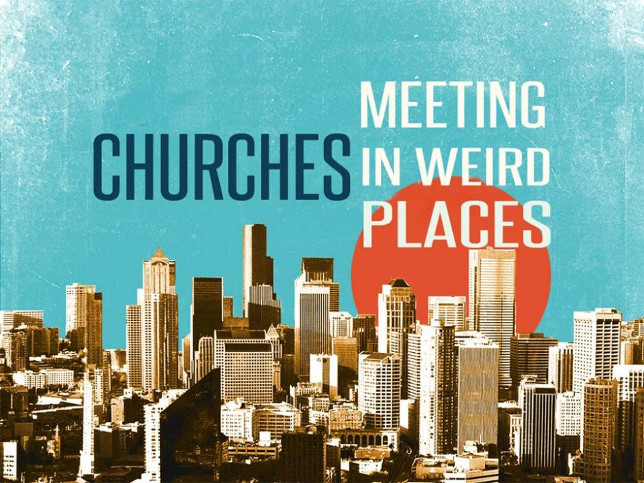By Paul Miles
We at Bold Grace Ministries have a passion for helping new grace-centered Church plants. I was reading the famous Church historian, Philip Schaff, and I came across a few paragraphs about church plants in the second and third century that I thought might be worth sharing. Christians haven't always had nice church buildings to gather in. In the early days of persecution, they had to get creative. Here's what Schaff says:
The Christian worship, as might be expected from the humble condition of the church in this period of persecution, was very simple, strongly contrasting with the pomp of the Greek and Roman communion; yet by no means puritanic [...]
Let us glance first at the places of public worship. Until about the close of the second century the Christians held their worship mostly in private houses, or in desert places, at the graves of martyrs, and in the crypts of the catacombs. This arose from their poverty, their oppressed and outlawed condition, their love of silence and solitude, and their aversion to all heathen art. The apologists frequently assert, that their brethren had neither temples nor altars (in the pagan sense of these words), and that their worship was spiritual and independent of place and ritual. Heathens, like Celsus, cast this up to them as a reproach; but Origen admirably replied: The humanity of Christ is the highest temple and the most beautiful image of God, and true Christians are living statues of the Holy Spirit, with which no Jupiter of Phidias can compare. Justin Martyr said to the Roman prefect: The Christians assemble wherever it is convenient, because their God is not, like the gods of the heathen, inclosed in space, but is invisibly present everywhere. Clement of Alexandria refutes the superstition, that religion is bound to any building.
In private houses the room best suited for worship and for the love-feast was the oblong dining-hall, the triclinium, which was never wanting in a convenient Greek or Roman dwelling, and which often had a semicircular niche, like the choir in the later churches. An elevated seat was used for reading the Scriptures and preaching, and a simple tables for the holy communion. Similar arrangements were made also in the catacombs, which sometimes have the form of a subterranean church.
The first traces of special houses of worship occur in Tertullian, who speaks of going to church, and in his contemporary, Clement of Alexandria, who mentions the double meaning of the word ekklesia. About the year 230, Alexander Severus granted the Christians the right to a place in Rome against the protest of the tavern-keepers, because the worship of God in any form was better than tavern-keeping. After the middle of the third century the building of churches began in great earnest, as the Christians enjoyed over forty years of repose (260?303), and multiplied so fast that, according to Eusebius, more spacious places of devotion became everywhere necessary. The Diocletian persecution began (in 303,) with the destruction of the magnificent church at Nicomedia, which, according to Lactantius, even towered above the neighboring imperial palace. Rome is supposed to have had, as early as the beginning of the fourth century, more than forty churches. But of the form and arrangement of them we have no account.1
House churches are somewhat common today, but desert places and graves? I applaud our brothers and sisters of years gone by for their willingness to use whatever was available! Our friends at Grace City Church are a great modern-day example of a church that is willing to think outside the box. They meet at skate parks and restaurants around Jacksonville, FL.
So, if you're thinking about starting a church, a bible study, or some other ministry and are worried that you don't have a regular place to gather, don't worry. We Christians have a long history of doing ministry in weird places!
1Philip Schaff History of the Christian Church volume 2, ?59 "Places of Common Worship" available online here.